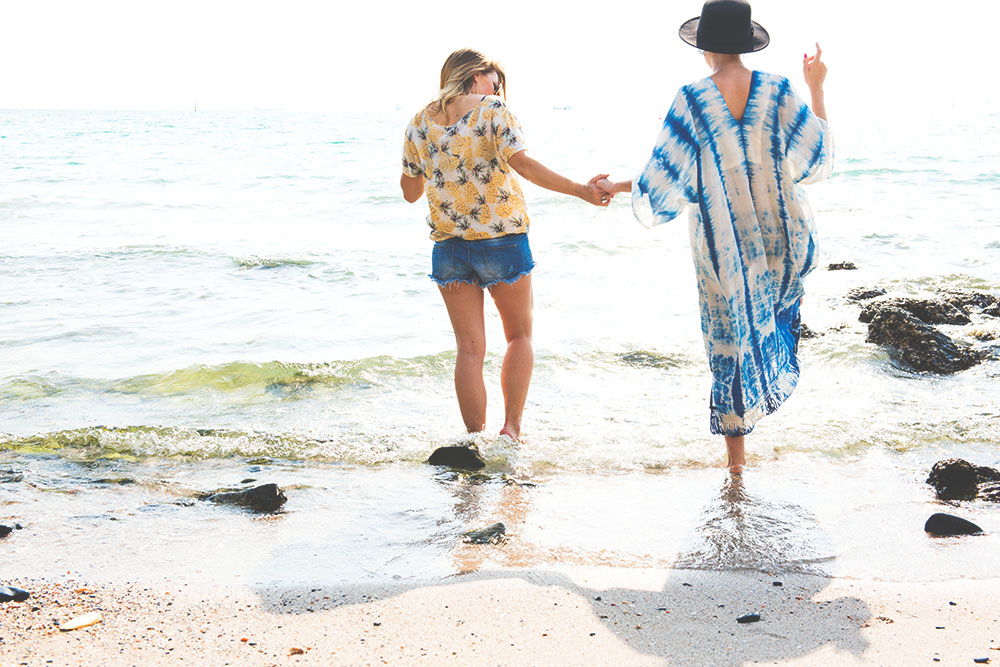Who doesn’t want a longer, healthier, and happier life? Let’s learn the secrets of the world’s Blue Zones and how they live longer, fuller lives than anywhere else on earth.
BY: EMILY WEEKS, RDN, LD
Wouldn’t it be a perfect world if we never had to obsess over what we eat or how much we exercise? What if we could design a life where maintaining a happy life and healthy weight were effects of an environment we created for ourselves?
Good news! We actually can re-structure our environment to be conducive to better health by creating environments similar to the Blue Zones.
The Blue Zones are locations on the planet that live the longest, healthiest lives. The people who inhabit the Blue Zones have common lifestyle characteristics that contribute to their long lives– the blue zones are in specific cities in Italy, Japan (who are some of the longest living people in the world), California, Costa Rica and Greece.
One of the most common traits is a sense of community and balance:
- Family – put ahead of other concerns.
- Less smoking.
- Semi-vegetarianism – except for the Sardinian diet, the majority of food consumed is derived from plants.
- Legumes – commonly consumed.
- Moderate calorie and moderate alcohol intake, especially wine.
- Constant moderate physical activity – an inseparable part of life.
- Social engagement – people of all ages are socially active and integrated into their communities.
- A sense of life purpose.
- Engagement in spirituality or religion.
Is it possible to take these observations that were learned from them and apply them to our own lives?
In one small town in Minnesota, a Blue Zone experiment was actually implemented. Opportunities to become healthier were weaved into the fabric of the community, where residents were encouraged to use smaller plates and move the not-so-healthy food up to difficult-to-reach places. Grocery stores and business displayed healthy snacks and restaurants added healthy options to their menus. The town even designed a sidewalk loop around the lake and encouraged kids to walk to school. Town residents were encouraged to form moais, the Japanese word for groups of people who support one another for life, and who walk or exercise together in person instead of simply “connecting” on social media.
The researchers didn’t tell the residents to exercise more or tell them what to eat; rather, it was their living environment that changed, and the town was restructured to make it easy for people to do the right thing.
As a result, the town saw a 28% reduction in health care costs and a 10% decrease in body weight, without explicitly telling people to try to lose weight. The city built 46 new community gardens, and 44% of the adults participated in walking moais, logging over 75 million steps in one year.
So what can we all learn from this experiment?
By being more intentional with our environments, we can design a living space that makes it easier to do more healthful activities. More importantly, it indicates that solely emphasizing diet and exercise are not the answers to a healthy, happy life. When the focus is entirely on dieting and exercising, it takes the focus away from a healthy social life, romance, self-care practices, positive self talk…the list goes on and on. It’s logical: maintaining a healthy life is hard when you’re stressed out, mentally and physically.
We must simply take care of ourselves and treat our bodies with respect,
And good health will naturally come.
Adapted from the original article.
Emily Weeks, RDN, LD is a nationally-recognized nutrition and culinary expert based in Fort Worth, TX. Emily believes the path to a nourished, happy life is to develop a healthy relationship with food, our minds and our bodies. She focuses on helping others achieve a life of balance and harmony through mindfulness and nourished bodies. Read more from Emily at Zen and Spice.

